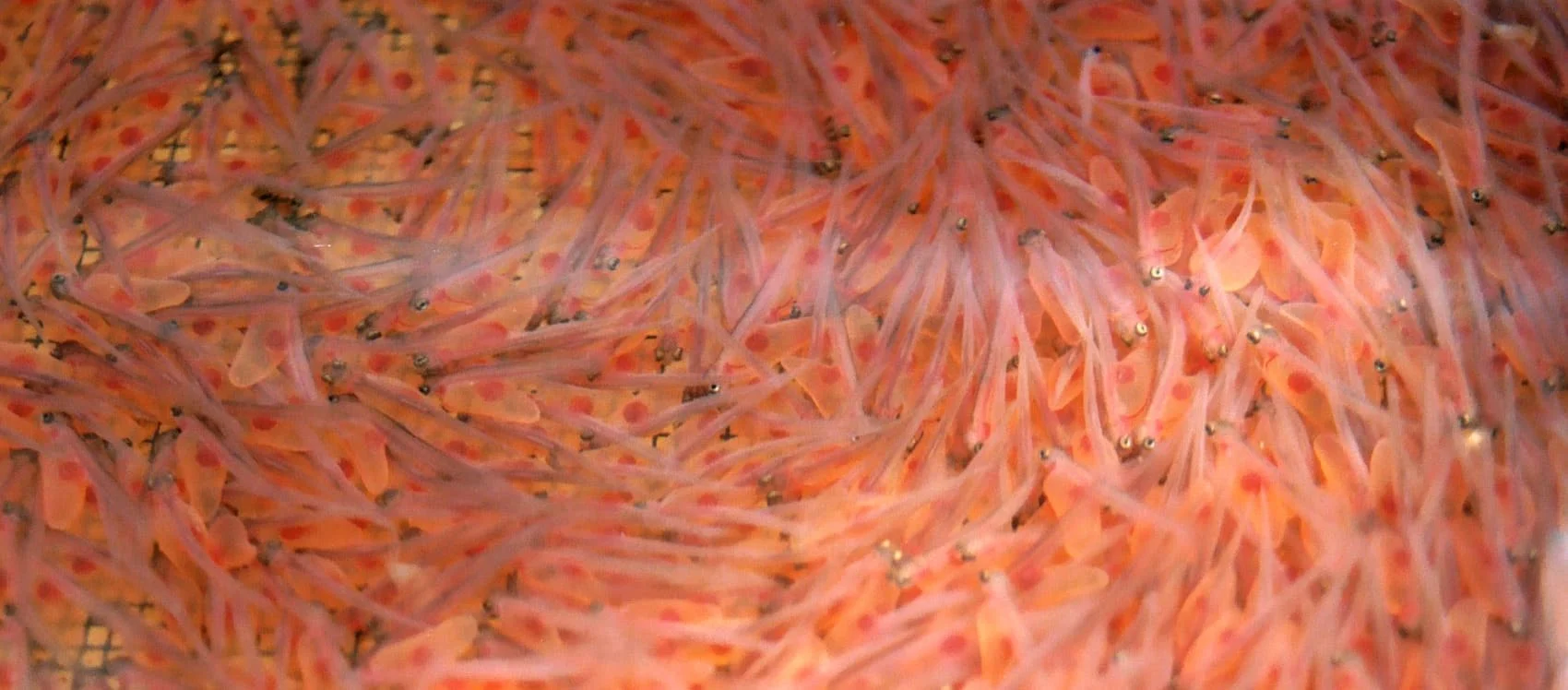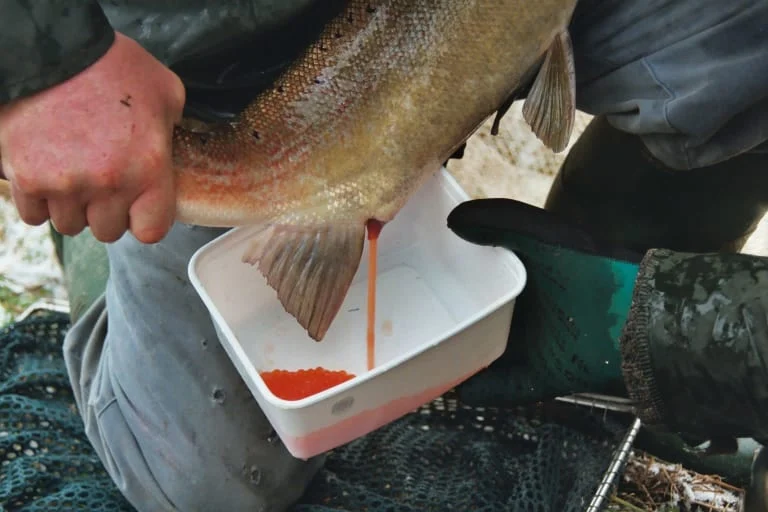
Wouldn’t life be easy if we could correct all the problems and damage done to our rivers by releasing artificially reared fish? There is seldom a more controversial topic in fishery management than that of stocking but is this a solution for the Wye and Usk and what drives the polarisation of views?
Stocking can work in some instances. Our reservoirs can be made to hold considerable numbers of rainbow trout, stocked to order and secure in the confines of their environment, ready to deliver instant sport and bred large enough to evade most of the likely (but not all!) predators. But can it work for salmon, which have to travel 2,000 + miles to feed and then negotiate their way back to their natal rivers to spawn?
Read about the history of salmon hatcheries and stocking in the Wye.
Read about the arguments for and against the artificial stocking of salmon in the Wye and Usk.

There are several techniques in the artificial stocking toolbox:
Declining numbers of rod caught salmon are symptomatic of problems in the rivers and/or at sea.
The Foundation’s policy is to deploy methods that deal with the causes rather than the symptoms. An example of the effectiveness of such a policy is the Wye in Victorian times. By 1900 the river was so over-netted that the yearly rod catch had plummeted to below 450. However, it had a pristine and relatively barrier free tributary system. The reduction in netting (cause) in 1901 resulted in a spectacular turn around in salmon numbers, as shown by this graph.
This is an example where a hatchery would not have resolved the issue as the cause of the decline (extensive river netting) would not have been corrected.
Another example is the Tyne where the toxic state of the estuary prevented fish entering and leaving the river except in very high flows. In the mid-1960s when the water quality improved sufficiently to allow fish passage, the river became a salmon fishery again (it was a very good one before industrial pollution curtailed the runs, incidentally). The improvement was spectacular and helped further by the removal of the northeast drift nets 2003.
Complicating the understanding of the issues behind the recovery, however, was a hatchery that was built to mitigate the effect of Kielder Water. This reservoir blocked off 7% of the catchment, which at the time already supported a good and improving population of salmon. The success of the Tyne recovery has often been incorrectly attributed to this hatchery.
However, a long term assessment by the Environment Agency shows that it only accounts for 2% – 7% of the fish returning to the river. Please click here for the Tyne report.
Today, both the Wye and Usk face a range of problems rather than a single issue. Not least is a seemingly inexorable decline in the % survival of smolts at sea as shown by this graph. This long term sea survival decline has been met with reductions in the exploitation of salmon: the Foundation’s buy-off of the estuary putchers and nets in 2000; the legal Irish drift net cessation in 2007 and the 2010 buy-off of the Lydney Park putchers and subsequent limit on their catches. Voluntary catch and release by the Wye rod fishery was superseded by a 100% release byelaw in 2012. On the Usk, it was made mandatory in 2020 with the introduction of a pan-Wales catch and release bylaw for salmon and sea trout.
The achievable levels of stocking will never restore the Wye’s salmon, nor will a hatchery sort out the causes of their decline.
Our strategy therefore is to deliver permanent in-river works including barrier removal, water quality improvements, habitat restoration and reduced estuarial salmon exploitation. This has several advantages:
The achievable levels of stocking will never restore the Wye’s salmon, nor will a hatchery rectify the causes of their decline. We must therefore pursue other methods of restoration that are permanent and sustainable. The Usk also requires work to optimise salmon productivity and these other methods are the best use of available funds for both rivers.
Following a consultation that found no further evidence to support their use, Natural Resources Wales decided to close operating hatcheries in Wales in 2015 and to proscribe stocking salmon in all Welsh rivers.
The money used to manage the Wye hatchery has been allocated for works on the river that go above and beyond existing and planned projects. The Cynrig hatchery site is now used for educational and research purposes.
Against strong and, at times, fervid opposition, Natural Resources Wales are to be congratulated for staying true to best available scientific evidence and pushing through this controversial but necessary measure.
Further reading:
The Wild Trout Trust’s advice on stocking
Dess hatchery 2011 survery bulletin
A Review of the Welsh Region Microtagging Programme 1984 – 1993 (G Jones)
Share this page
The Wye and Usk Foundation
The Right Bank, The Square
Talgarth
Brecon
LD3 0BW
The Wye & Usk Foundation is a charity registered in England and Wales (no. 1080319).